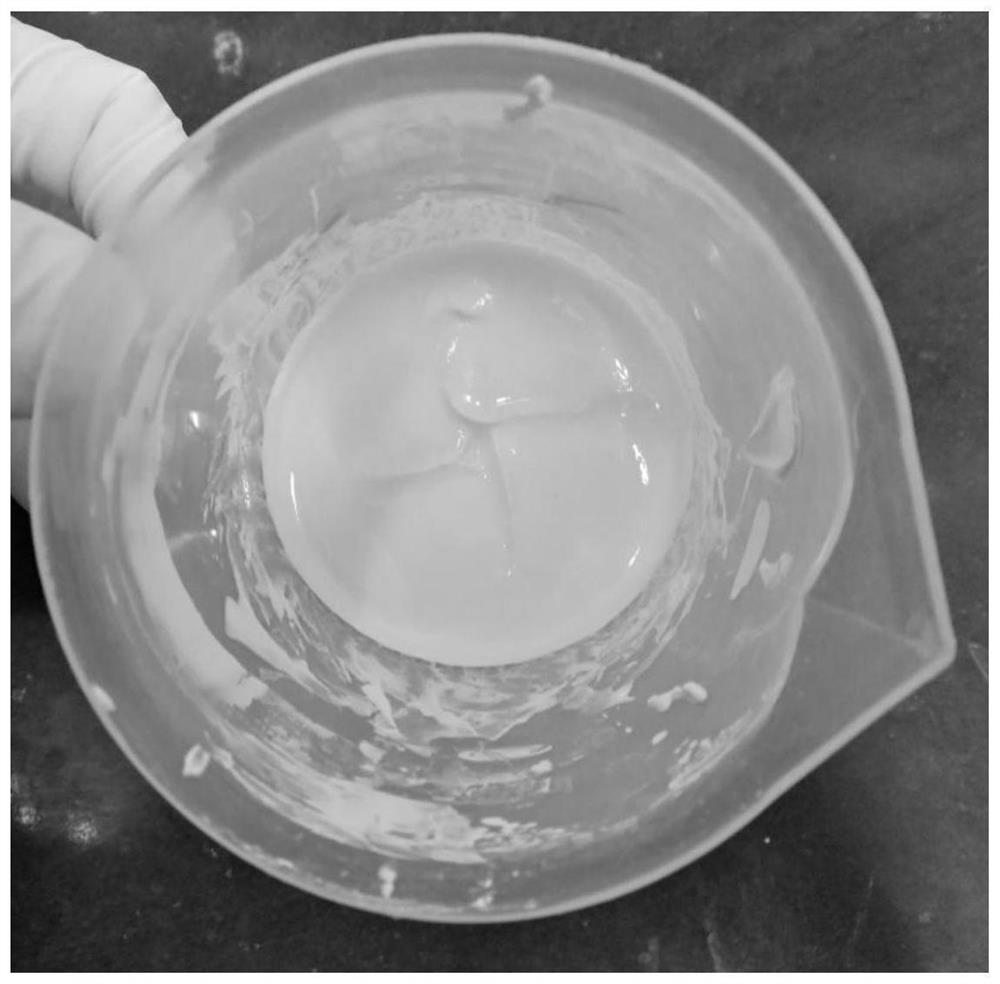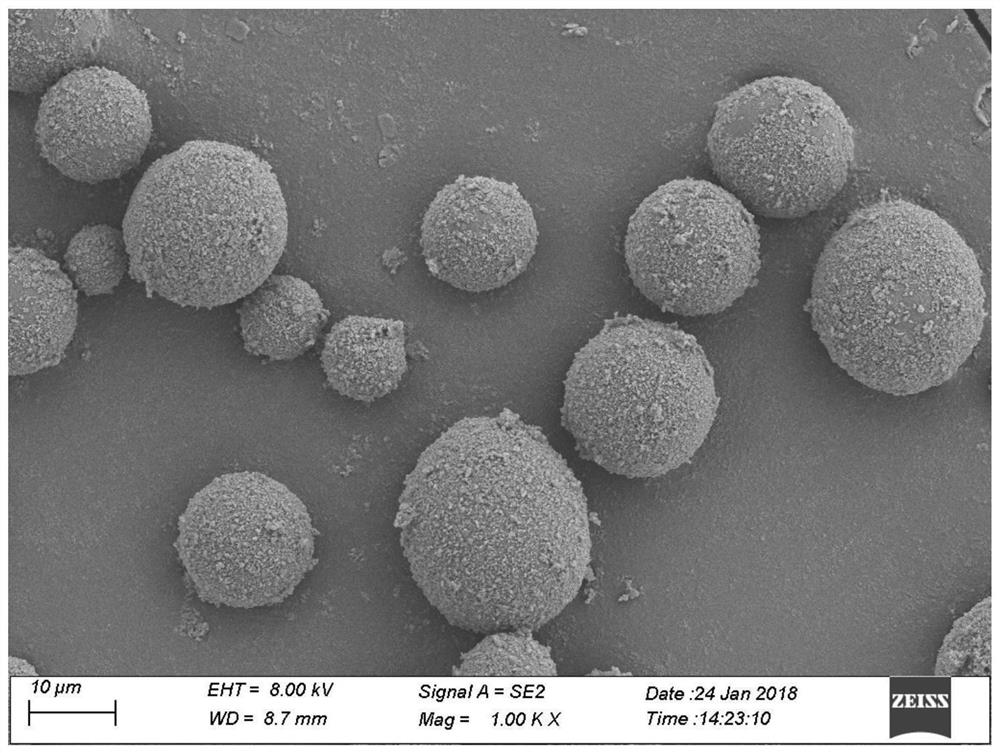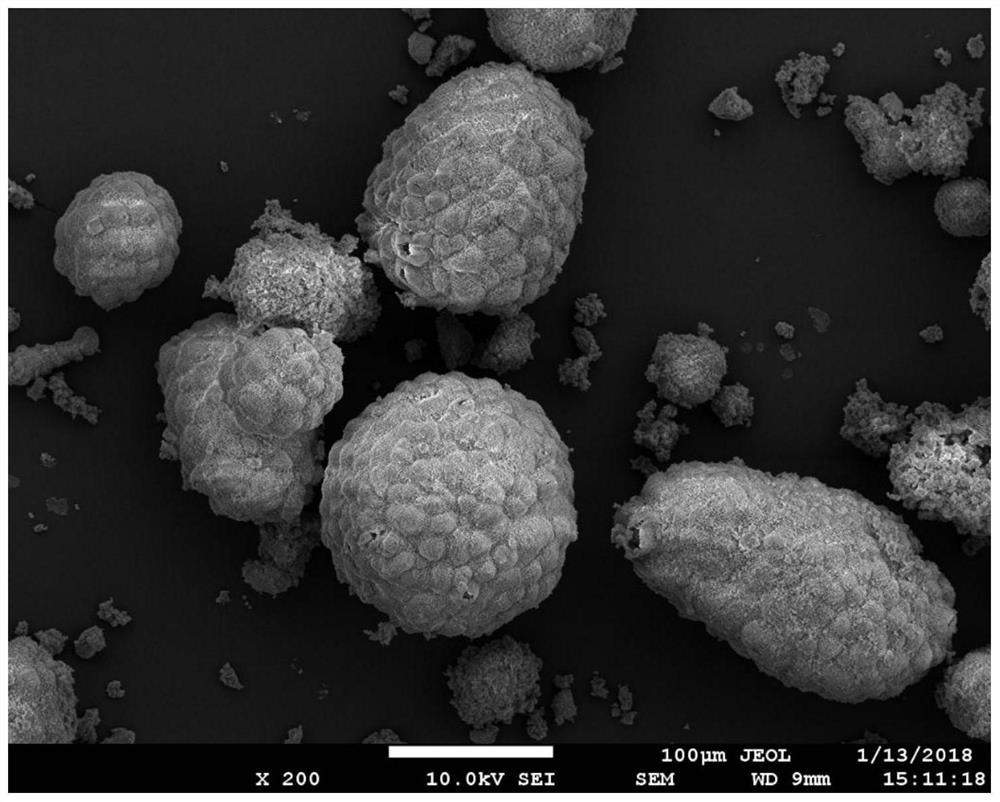Preparation method of photosensitive particle stable emulsion and thin-walled hollow sphere
A photosensitive, hollow sphere technology, applied in the field of porous ceramic materials, can solve the problems of high production cost, limited preparation parameters, difficult mass production, etc., and achieve the effects of low cost, favorable industrial production and strong stability
- Summary
- Abstract
- Description
- Claims
- Application Information
AI Technical Summary
Problems solved by technology
Method used
Image
Examples
Embodiment 1
[0037] Preparation of oil-in-water photosensitive particle stabilized emulsion:
[0038] (1) Water phase: Prepare 30 g of water-based alumina ceramic slurry with a solid phase content of 52 wt%, wherein the average particle size of alumina is 0.5 μm, add 0.1 g of valeric acid, and adjust the pH to 4.8;
[0039] (2) Oil phase: After mixing 35g of polyurethane acrylate and pentaerythritol tetraacrylate at a mass ratio of 3:2, add 2wt% resin mass of 819 photoinitiator;
[0040] (3) Emulsification: Mix the water phase and the oil phase, and use a mechanical mixer to stir and emulsify at a speed of 1000rmp to obtain the following figure 1 The oil-in-water photosensitive particles stabilize the emulsion as shown.
[0041] Preparation of thin-walled hollow spheres:
[0042] (1) Use hydrochloric acid to adjust the pH to 500ml of deionized water to 4.8 to dilute the emulsion obtained above, and stir it with a mixer at 400rmp for 5 minutes, and then irradiate with a single light sourc...
Embodiment 2
[0046] Preparation of water-in-oil photosensitive particle stabilized emulsion:
[0047] (1) Water phase: Prepare 30 g of water-based alumina ceramic slurry with a solid phase content of 52 wt%, wherein the average particle size of alumina is 0.5 μm, add 0.14 g of valeric acid, and adjust the pH to 4.6;
[0048] (2) Oil phase: uniformly mix pentaerythritol tetraacrylate with a total mass of 35g and 819 photoinitiator, wherein the mass of 819 photoinitiator is 2wt% of the mass of pentaerythritol tetraacrylate;
[0049] (3) Emulsification: Mix the water phase and the oil phase, and stir and emulsify with a mechanical stirrer at a rotational speed of 1000rmp to obtain a water-in-oil type photosensitive particle stable emulsion.
[0050] Preparation of thin-walled hollow spheres:
[0051] (1) Dilute the above-obtained emulsion with 500ml of octane, and stir it with a stirrer at a speed of 400rmp for 5 minutes, and then irradiate it with a single light source of 405nm to trigger t...
Embodiment 3
[0055] Preparation of water-in-oil photosensitive particle stabilized emulsion:
[0056] (1) Water phase: Prepare 50g of photosensitive water-based alumina sol slurry with a solid phase content of 30wt%. The contents of acrylamide, methylene bisacrylamide and photoinitiator 1173D in the water-based slurry are respectively 13wt%, 1wt%, 1wt% of the total mass of the material, the particle size of the aluminum sol nanoparticles is 30nm; add 0.2g valeric acid to adjust the pH of the water-based photosensitive slurry to 4.2;
[0057] (2) Oil phase: uniformly mix pentaerythritol tetraacrylate with a total mass of 20g and 819 photoinitiator, wherein the mass of 819 photoinitiator is 2wt% of the mass of pentaerythritol tetraacrylate;
[0058] (3) Emulsification: Mix the water phase and the oil phase, and stir and emulsify with a mechanical stirrer at a rotation speed of 800 rpm to obtain a water-in-oil type photosensitive particle stable emulsion.
[0059] Preparation of thin-walled ho...
PUM
| Property | Measurement | Unit |
|---|---|---|
| particle diameter | aaaaa | aaaaa |
| size | aaaaa | aaaaa |
| thickness | aaaaa | aaaaa |
Abstract
Description
Claims
Application Information
 Login to View More
Login to View More - R&D
- Intellectual Property
- Life Sciences
- Materials
- Tech Scout
- Unparalleled Data Quality
- Higher Quality Content
- 60% Fewer Hallucinations
Browse by: Latest US Patents, China's latest patents, Technical Efficacy Thesaurus, Application Domain, Technology Topic, Popular Technical Reports.
© 2025 PatSnap. All rights reserved.Legal|Privacy policy|Modern Slavery Act Transparency Statement|Sitemap|About US| Contact US: help@patsnap.com



